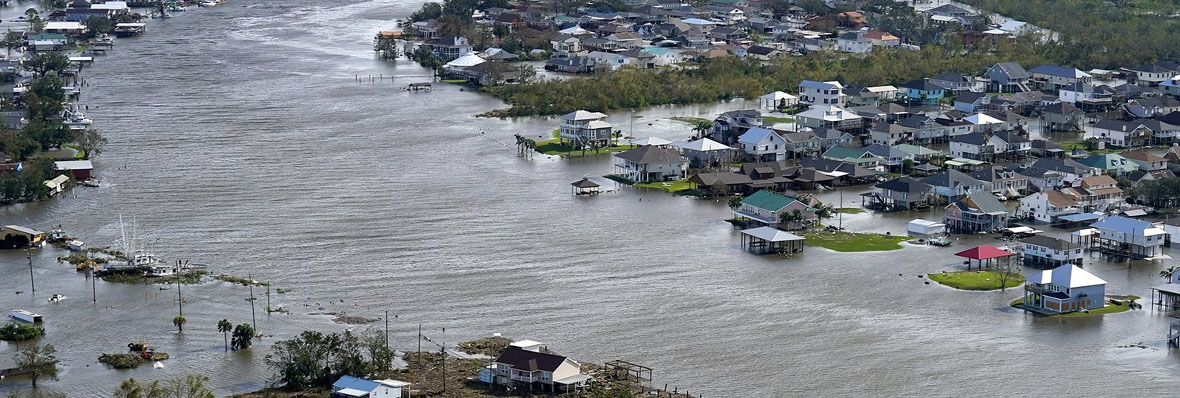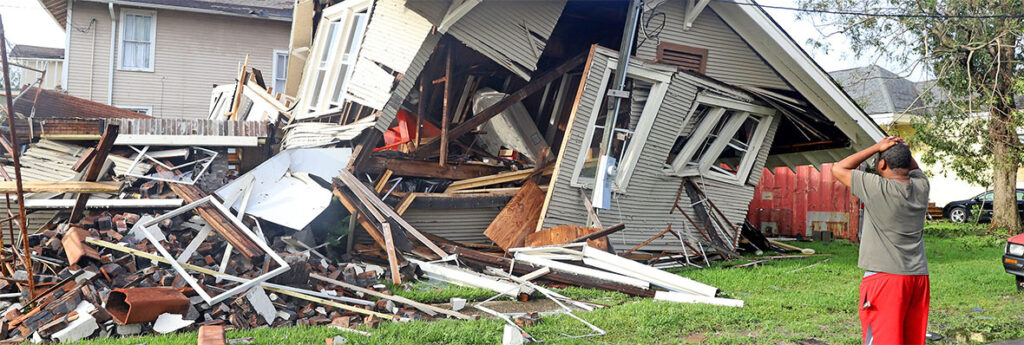Hundreds of thousands of Louisianans sweltered in the aftermath of Hurricane Ida on Tuesday with no electricity, no tap water, precious little gasoline and no clear idea of when things might improve. Long lines that wrapped around the block formed at the few gas stations that had fuel and generator power to pump it. People cleared rotting food out of refrigerators. Neighbors shared generators and borrowed buckets of swimming pool water to bathe or to flush toilets.
“We have a lot of work ahead of us and no one is under the illusion that this is going to be a short process,” Gov. John Bel Edwards said as the cleanup and rebuilding began across the soggy region in the oppressive late-summer heat.
New Orleans officials announced seven places around the city people could get a meal and sit in air conditioning. The city was also using 70 transit buses as cooling sites and will have drive-thru food, water and ice distribution locations set up on Wednesday, Mayor LaToya Cantrell said.
Cantrell also ordered a nighttime curfew Tuesday, calling it an effort to prevent crime after Hurricane Ida devastated the power system and left the city in darkness.
The mayor also said she expects the main power company Entergy to be able to provide some electricity to the city by Wednesday evening, but stressed that doesn’t mean a quick citywide restoration. Rather, she said, the energy company will be able to begin restoring its mangled distribution system of snapped poles and tangled lines.
She said residents would see progress, but also acknowledged frustration in the days ahead.
“We know it’s hot. We know we do not have any power and that continues to be a priority,” she told a news conference.
Edwards said state officials also were working to set up food, water and ice distribution, but that it wouldn’t start Tuesday. The governor’s office also said discussions were underway about establishing cooling stations and places where people on oxygen could plug in their machines, but it had no details on when those might be up and running.
More than 1 million homes and businesses in Louisiana and Mississippi – including all of New Orleans – were left without power when Ida slammed the electric grid on Sunday with its 150 mph (240 kph) winds, toppling a major transmission tower and knocking out thousands of miles of lines and hundreds of substations.
An estimated 25,000-plus utility workers labored to restore electricity, but officials said it could take weeks.
With water treatment plants overwhelmed by floodwaters or crippled by power outages, some places were also facing shortages of drinking water. About 441,000 people in 17 parishes had no water, and an additional 319,000 were under boil-water advisories, federal officials said.
The number of deaths climbed to at least four in Louisiana and Mississippi, including two people killed Monday night when seven vehicles plunged into a 20-foot-deep (6-meter-deep) hole near Lucedale, Mississippi, where a highway had collapsed after torrential rains. Edwards said he expects the death toll to rise.
In Slidell, crews searched for a 71-year-old man who was attacked by an alligator that tore off his arm as he walked through Ida’s floodwaters. His wife pulled him to the steps of the home and paddled away to get help, but when she returned, he was gone, authorities said.
Wildlife officials warned of bears, snakes, alligators and feral hogs looking for food in the storm’s aftermath.
Edwards travelled with FEMA Administrator Deanne Criswell to see the damage firsthand. She said FEMA teams arriving Tuesday would go house to house in hard-hit neighborhoods to register people for aid, particularly in areas with widespread cellphone outages.
In New Orleans, drivers lined up for roughly a quarter-mile, waiting to get into a Costco that was one of the few spots in the city with gasoline. At other gas stations, motorists occasionally pulled up to the pumps, saw the handles covered in plastic bags and drove off.
In hard-hit Houma, the dismal reality of life without air conditioning, refrigeration or other more basic needs began to sink in.
“Our desperate need right now is tarps, gasoline for generators, food, water,” pastor Chad Ducote said. He said a church group from Mississippi arrived with food and supplies, and neighbors came to his pool to scoop up buckets of water.
“The people down here are just doing what they can. They don’t have anything,” he said.
Adding to the misery was the steamy weather. A heat advisory was issued for New Orleans and the rest of the region, with forecasters saying the combination of high temperatures and humidity could make it feel like 105 degrees Fahrenheit (41 degrees Celsius) on Tuesday and 106 on Wednesday.
Also stuck in New Orleans were tourists who didn’t get out before the storm. The airport canceled all incoming and outgoing commercial flights for a third day, saying the lack of power and water meant no air conditioning or restrooms.
Cynthia Andrews couldn’t go back to her New Orleans home if she wanted to. She was in a wheelchair, tethered by a power cord to the generator system running the elevators and hallway lights at the Le Meridien hotel.
When the power went out Sunday, the machine that helps Andrews breathe after a lung collapse in 2018 stopped working. The hotel let her stay in the lobby, giving her a cot after she spent nearly a whole night in her wheelchair.
“It was so scary, but as long as this thing keeps running, I’ll be OK,” she said.


